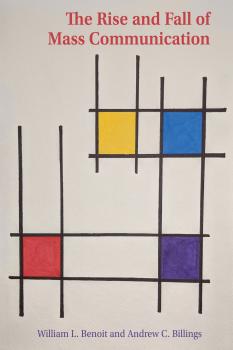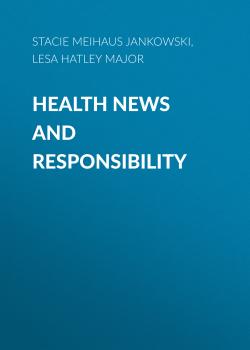ТОП просматриваемых книг сайта:
Mass Communication and Journalism
Скачать книги из серии Mass Communication and JournalismАннотация
Mass communication theories were largely built when we had mass media audiences. The number of television, print, film or other forms of media audiences were largely finite, concentrating people on many of the same core content offerings, whether that be the nightly news or a popular television show. What happens when those audiences splinter? <EM>The Rise and Fall of Mass Communication</EM> surveys the aftermath of exactly that, noting that very few modern media products have audiences above 1–2% of the population at any one time. Advancing a new media balkanization theory, Benoit and Billings neither lament nor embrace the new media landscape, opting instead to pinpoint how we must consider mass communication theories and applications in an era of ubiquitous choice.
Аннотация
Аннотация
In this dizzying post-truth, post-fact, fake news era, the onslaught and speed of potentially untrue, incorrect, or fabricated information (some crafted and weaponized, some carelessly shared) can cause a loss of our intellectual bearings. If we fail to have a common truthful basis for discussions of opinion and policy, the integrity of our democracy is at risk.This up-to-date anthology is designed to provide a survey of technological, ethical, and legal issues raised by falsehoods, particularly social media misinformation. The volume explores visual and data dissemination, business practices, international perspectives, and case studies. With misinformation and misleading information being propagated using a variety of media such as memes, data, charts, photos, tweets, posts, and articles, an understanding of the theory, mechanisms, and changing communication landscape is essential to move in the right direction with academic, industry, and government initiatives to inoculate ourselves from the dangers of fake news. The book takes an international and multidisciplinary approach with contributions from media studies, journalism, computer science, the law, and communication, making it distinct among books on fake news.This book is essential for graduate or undergraduate students in courses dealing with fake news and communication studies. Relevant courses include media studies, journalism, public relations, media ethics, media law, social media, First Amendment law, philosophy, and political science.
Аннотация
Аннотация
Who the public blames for health problems determines who the public believes is responsible for solving those health problems. Health policies targeting the broader public are the most effective way to improve health. The research approach described in this book will increase public support for critical health policies. The authors systematically organized and analyzed 25 years of thematic and episodic framing research in health news to create an approach to reframe responsibility in health news in order to gain public support for health policies. They apply their method to two of the top health issues in world—obesity and mental health—and conclude by discussing future research and plans for working with other health scholars, health practitioners, and journalists.






